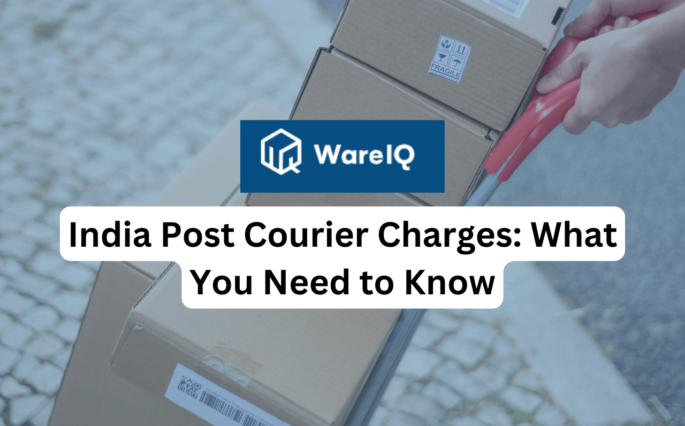Overcoming Challenges in Large and Bulky Item Fulfillment: Strategies for Success

The Fulfillment Of large and bulky items presents unique challenges and opportunities in the logistics and supply chain industry. As consumer expectations for rapid and reliable delivery continue to rise, businesses must adapt their strategies to ensure the efficient handling, transportation, and delivery of oversized goods. These items, which include furniture, appliances, and industrial equipment, require specialized packaging, handling equipment, and transportation solutions.
Navigating the complexities of large and bulky item Fulfillment Is essential for maintaining customer satisfaction, minimizing costs, and enhancing overall operational efficiency. This article explores the various aspects of large and cumbersome item fulfillment, highlighting strategies for success and addressing the common challenges in Large and Bulky Item Fulfillment businesses face in this domain.
- What Is Large and Bulky Item Fulfillment?
- Strategies to Improve the Success Rate of Large and Bulky Item Fulfillment
- Challenges in Large and Bulky Item Fulfillment
- How to Overcome the Challenges in Large and Bulky Item Fulfillment?
- Conclusion
- Frequently Asked Questions
- What is considered a large and bulky item in fulfillment?
- How can businesses optimize their warehouse layout for large items?
- What packaging materials are recommended for large and bulky items?
- What are the key challenges in large and bulky item fulfillment?
- How can technology improve the Fulfillment Process for large items?
- Why is partnering with specialized carriers important for large item delivery?
- How can businesses manage the cost of fulfilling large and bulky items?
What Is Large and Bulky Item Fulfillment?
Large and bulky item Fulfillment Refers to handling, storing, packaging, and delivering oversized and heavy goods. These items are typically characterized by their weight and dimensions and exceed the standard shipping limits. Examples include furniture, large appliances, building materials, and certain types of industrial equipment. Due to their size and weight, these items require specialized handling equipment such as forklifts, pallet jacks, and heavy-duty trucks.
Additionally, the Fulfillment Process often involves customized packaging solutions to ensure the safe transit of these goods. Effective large and bulky item Fulfillment Is critical for businesses that deal with such products, as it directly impacts delivery times, costs, and customer satisfaction. The process must be meticulously planned and executed to manage the complexities associated with these shipments.
Strategies to Improve the Success Rate of Large and Bulky Item Fulfillment
Improving the success rate of large and bulky item Fulfillment requires a multifaceted approach. Here are some key strategies:
- Optimised Inventory Management: Ensure accurate tracking of inventory levels to prevent stock outs or overstocking. Utilize inventory management software to monitor and forecast demand.
- Specialized Packaging Solutions: Invest in custom packaging materials that can withstand the weight and size of large items, reducing the risk of damage during transit.
- Advanced Handling Equipment: To enhance efficiency and safety, employ equipment such as forklifts and pallet jacks specifically designed for heavy lifting.
- Efficient Warehouse Layout: Design the warehouse layout to facilitate easy movement and storage of bulky items. This includes wider aisles and designated storage areas for large goods.
- Training and Safety Protocols: To minimize accidents and injuries, provide comprehensive training to staff on handling and safety procedures for large items.
- Technology Integration: Implement advanced logistics technologies, such as GPS tracking and route optimisation software, to improve delivery accuracy and efficiency.
- Carrier Partnerships: Partner with carriers experienced in handling large and bulky items to leverage their expertise and infrastructure.
By adopting these strategies, businesses can significantly enhance their ability to fulfill large and bulky items efficiently and effectively.
Challenges in Large and Bulky Item Fulfillment
Fulfilling large and bulky items comes with several inherent challenges:
- Handling Difficulties: The size and weight of these items require specialized handling equipment and trained personnel, which can increase operational complexity.
- Storage Space: Bulky items take up significant storage space, necessitating a well-organized warehouse layout and potentially higher storage costs.
- Packaging Requirements: Ensuring that large items are adequately packaged to prevent damage during transit can be challenging and costly.
- Transportation Issues: Finding suitable transportation options for oversized goods can be difficult, especially for long-distance or international shipments.
- Delivery Constraints: Last-mile delivery for large items often involves additional challenges, such as navigating narrow streets, dealing with limited access points, and coordinating delivery times with customers.
- Regulatory Compliance: Adhering to various transportation regulations and safety standards for large and heavy items can complicate the Fulfillment Process.
- Cost Management: The additional resources required for handling, storing, and transporting large items can lead to higher Fulfillment Costs.
Addressing these challenges is crucial for businesses to maintain efficient operations and meet customer expectations.
How to Overcome the Challenges in Large and Bulky Item Fulfillment?
To overcome the challenges associated with large and bulky item fulfillment, businesses can adopt the following strategies:
- Invest in Training: Provide regular training for staff on handling and safety procedures for large items to minimize risks and improve efficiency.
- Use Specialized Equipment: Equip warehouses with machinery designed for heavy lifting and transport to facilitate smoother operations.
- Optimize Warehouse Layout: Designate specific areas for bulky items and ensure that the warehouse layout supports easy movement and access.
- Implement Robust Packaging Solutions: Use durable and customized packaging materials to protect large items during transit, reducing the risk of damage.
- Leverage Technology: Utilize logistics and inventory management software to streamline operations, improve tracking, and optimize delivery routes.
- Partner with Specialized Carriers: Collaborate with carriers with experience and expertise handling large and bulky shipments to ensure reliable delivery services.
- Enhance Communication: Maintain clear communication with customers regarding delivery schedules and requirements to ensure smooth last-mile delivery.
- Plan for Peak Periods: Anticipate and prepare for peak demand by adjusting inventory levels, staffing, and transportation resources accordingly.
- Monitor and Analyze Performance: Continuously monitor Fulfillment Performance and analyze data to identify areas for improvement and implement corrective actions.
By implementing these strategies, businesses can effectively manage the complexities of large and bulky item fulfillment, ensuring timely and cost-effective deliveries.
Related read: eCommerce Fulfillment for Furniture & Large Items: Webinar of WareIQ and Pepperfry
Conclusion
Efficiently managing the Fulfillment Of large and bulky items is a challenging yet essential aspect of modern logistics. Businesses can overcome the associated challenges by understanding the unique requirements of handling oversized goods and implementing targeted strategies. Each step plays a crucial role in ensuring successful fulfillment, from optimizing warehouse layouts and leveraging specialized equipment to enhancing packaging solutions and partnering with experienced carriers.
Addressing the complexities of large and bulky items Fulfillment Requires a proactive and comprehensive approach. By continuously refining processes, investing in technology, and focusing on customer communication, businesses can achieve higher success rates and maintain a competitive edge in the logistics industry. The ability to efficiently manage these shipments enhances operational efficiency and significantly improves customer satisfaction and loyalty.
Frequently Asked Questions
What is considered a large and bulky item in fulfillment?
Large and bulky items in Fulfillment Are products that exceed standard shipping dimensions and weight limits. Examples include furniture, large appliances, and industrial equipment requiring specialized handling and transportation.
How can businesses optimize their warehouse layout for large items?
Businesses can optimize their warehouse layout by designating specific storage areas for bulky items, ensuring wider aisles for easy movement, and using vertical storage solutions to maximize space utilization.
What packaging materials are recommended for large and bulky items?
Durable packaging materials such as reinforced cardboard, custom crates, and pallets are recommended for large items. Additionally, cushioning materials like foam or bubble wrap can help protect items during transit.
What are the key challenges in large and bulky item fulfillment?
Key challenges include handling difficulties, storage space requirements, packaging needs, transportation issues, delivery constraints, regulatory compliance, and higher Fulfillment Costs.
How can technology improve the Fulfillment Process for large items?
Technology can improve the Fulfillment Process by providing real-time tracking, route optimisation, inventory management, and automated handling solutions, leading to increased efficiency and accuracy.
Why is partnering with specialized carriers important for large item delivery?
Partnering with specialized carriers ensures that businesses leverage the expertise and infrastructure of carriers experienced in handling large and bulky shipments, leading to more reliable and efficient delivery services.
How can businesses manage the cost of fulfilling large and bulky items?
Businesses can manage costs by optimizing inventory levels, negotiating favorable rates with carriers, using efficient packaging materials, and leveraging technology to streamline operations and reduce manual labor.








